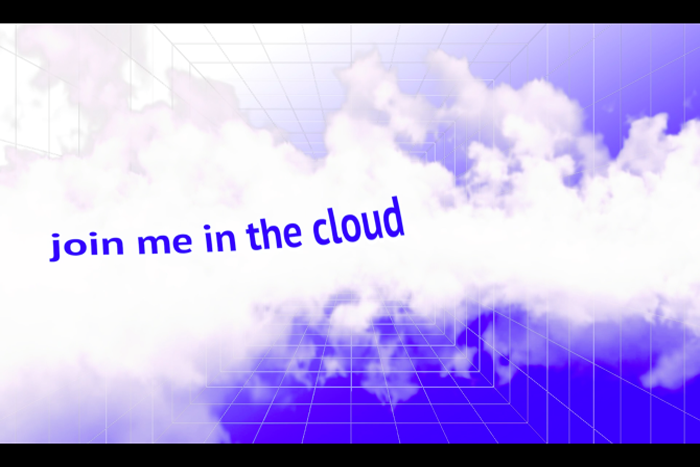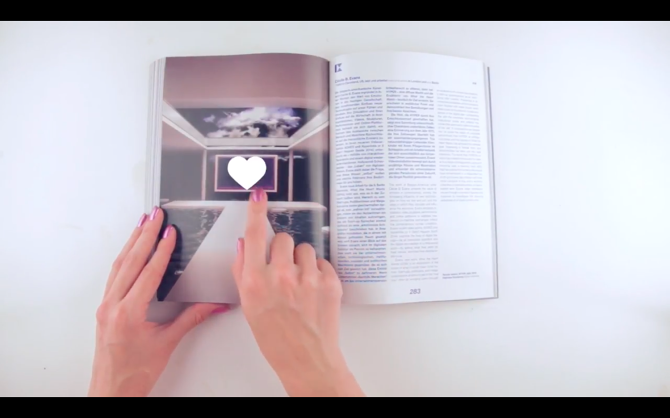Thea Lazăr

*Part of an Interview Series Taken by Sabin Borş in 2018
Thea Lazăr is a young artist whose work ties Internet culture with real life, focusing on how technology influences us and our online behavior. She has been actively involved in various cultural projects and events in Cluj-Napoca together with the Aici Acolo collective.
Sabin Borş: Was there a particular moment when you started working with digital media? How do you make use of the Internet in your artworks?
Thea Lazăr: I cannot pinpoint exactly when I started working with digital content, but I think it’s been anticipated the moment I installed my first Sims in middle school. All my work relates to the Internet, whether it’s subject-wise or formally— translating ideas from the Internet into the physical world. I usually prepare my work to live outside of the Internet, but somehow it always ends up talking about Internet-related matters.
SB: Why did you find this medium so appealing compared to others?
TL: Computers have always felt like second nature to me, so it’s just comfortable, handy, and honest to create digital content.
SB: Were you influenced in any way in the manner you conceive your works?
TL: A big influence—and also a change of perspective—has been the 9th Berlin Biennale, curated by DIS. It made me see how many different things could be art and made me want to make things. It took art down from the pedestal, for me, and I’ve had a more relaxed approach towards my work since.
SB: In what way exactly—why did these ideas in particular leave an impression on you? Are there any specific works that inspired you?
TL: It was the whole curatorial approach, creating this context which was new and very exciting for me. Maybe it was just the coincidence of our meeting in that time and space. Of course, there were a few specific works that inspired me, you can see which ones I like in my video I heart irl 😉

SB: You’ve made use of Biennale’s printed catalogue in your work I heart irl. Is this use an homage to the biennial, a commentary on it perhaps, an ironic take? How does this catalogue in particular relate to the specific ideas you sought to convey in this work?
TL: When I thought of the video I heart irl the catalogue was actually sitting on my nightstand, I’ve been shuffling through it the days before and it felt very familiar. It was almost a year after I’ve seen the biennale and it was like catching up, similar to scrolling through my Instagram feed where I catch up with friends and people I know. It’s too much to call it an homage but it’s not a commentary either, it’s merely an utensil.
SB: How would you describe your work and the process of translating digital content into physical format? What is specific to your artistic practice and the way you conceive your exhibitions?
TL: I just call it ‘new media’, although not everything I do is new media. Usually, the way I go about my work is, I start from a subject/theme and then decide in what form it would best live. The way we represent ourselves on the Internet and the specific behaviors we have in relation to it are recurring subjects in my practice. My work’s always been intended to live in the physical space, usually as videos on screens or projections. The videos are sometimes installed together with objects and I very much like to conceive the exhibition format myself, collaborating with the curator and taking into account the technical possibilities of the space.
How to Be Yourself, Thea Lazăr
SB: You are part of the collective managing the pop-up gallery Aici Acolo, which focuses on exhibiting emerging artists in alternative spaces. How would you describe your approach to curating digital works?
TL: I bookmark and I follow a lot of pages, platforms, artists, and works—and I keep myself updated with the latest posts, so that when a show approaches I have my proposal. With Aici Acolo, it’s always teamwork—you can’t really say that a show has been curated by one or two of us, it’s a collective collaboration; what really depends is just how much one is involved from a project to the other.
SB: Is there a relation between your curatorial and artistic practice? Does one influence the other?
TL: I have the same vision for my curatorial and artistic practice, I can’t think of the two apart.

SB: Do you think any one of your works is more representative for your artistic practice or the way you envision your subjects?
TL: I can’t say a work in particular, but perhaps Let’s Approach the Internet at the Speed of Dreams. The show brings together subjects that have always interested me, like astrology or the meaning of dreams in Internet culture.
SB: Could you please detail this idea or relation between the meanings of dreams in Internet culture?
TL: It’s very weird for me to comprehend how in this overly technologized era people can be spiritual and further these old myths and beliefs. I feel like searching for the meaning of dreams on google or hiring and online astrologer is a clash, feels like a scam.
SB: One of the works we really like is Photosynthesis, which makes use of one of the conceptual tropes of much of digital culture—the relation between the natural and the artificial. Could you please give us more details about this work? Was this work made specifically for the exhibition organized by Kinema Ikon? How do you think your work relates to the overall theme of the exhibition?
TL: This work was made specifically for the exhibition internet of ki (Kinema Ikon) and it had to be somehow related to the idea of the internet of things. During my research for grow lights I figured that a screen can actually keep house plants alive so I created this artificial sky for a table fool of plants. Images of sunsets from a google search were sliding on the screen during the gallery’s opening hours and so the plants were kept alive for the hole duration of the show. Did you know that the majority of plants only need red and blue light?

SB: In How To Be Yourself and The Birthday Party of an Android Not Yet Installed, you approach the relation between identity/persona, data, artificial intelligence, and cloud technologies. The setting for The Birthday Party… was particularly interesting. Could you explain how you tackled the above-mentioned relation in the two works?
TL: The Birthday Party of an Android not yet Installed is a collective work of the Aici Acolo team and from my perspective, it’s more about the extent that technology goes to privacy wise and how much are we willing to accept or how aware we are of what we’re giving. While both works are built around our relationship with technology, How to Be Yourself is more personal, using myself almost like a case study. From the filtered and powdered social media selves to the uncensored anonymity, we can embody numerous variations of ourselves. We can say that we are the same person online and irl but it’s also true that we are not and I like to question when, where and how we are altered/ augmented.
SB: What role does software, hardware, and coding play in your work and how did you learn using them?
TL: Technology plays a major role in developing my work, but as far as the hardware goes, I’ve learned to work with what I have, which is not very new or fancy. Software-wise, I play around but I always end up using a combination of some online tools, a 3D software, a video editor, and the trusty old Photoshop. I don’t really work with code, I just know enough to customize my website. I learned to use everything by myself, by following tutorials, getting tips from friends/colleagues, or just by figuring things out. Nobody taught us anything in the art school, but they did have demands, so there are software that I learned because I needed to use them for school.
SB: This seems to be a recurring topic among the artists we interviewed for this series.
TL: I remember that during my second year at the university, I needed to make an experimental video; so because glitches were rather new, I was trying to figure out how to do them on video. I had to download some audio editor, import a video into it, play with some variables, and export it to see the result. It was very time consuming and I spent days trying to get the glitches the way I wanted. When the teacher saw it, he just said ‘This is not experimental, you just applied a filter. This is not what I want, bring me something else tomorrow’. Not all teachers are like this, but I think digital art is not very encouraged and, if you want to do it, you have to do it on your own.
Thea Lazăr lives and works between Cluj-Napoca, Romania and the internet. She graduated from the University of Art and Design in the same city and studied for a semester in the New Media department at the Academy of Art in Szczecin, Poland. A recurring subject throughout her practice has been the construction of online identities, artificial alter-egos, internet-specific behaviors and how people relate and interact with them. She’s neither specifically interested in the past nor the future but in the way they affect our contemporary culture and how they come together to create a narrative in the present. Recently she has been researching the role of magic and the intricacies between science and pseudoscience in our contemporary, technologized present. Currently, astronomy and astrology spark her interest. Although her work is digital based, it’s usually meant to live offline, taking the form of installations, prints or screens. Since 2016 she has been a member of Aici Acolo – an artist run project focused on promoting young and emerging artists by organizing contemporary art exhibitions in unused or abandoned spaces in Cluj-Napoca.
Sabin Borș (b. 1981) is an independent editor and curator who also works as freelance layout designer for various web and print cultural projects. He is the founder and editor of the anti-utopias.com contemporary art platform and has been working for various specialised print and online media outlets in the field of art and architecture since 2009. In parallel with his Ph.D. thesis in philosophy—tackling the subject of archives, discourse, and contemporaneity—he started developing a multi-modal archival installation. The installation is intended as a critical approach to constructing cross-cultural and cross-disciplinary frameworks for the documentation, interpretation, and dissemination of contemporary art, providing alternative understandings of the socio-political foundations of art, constituent cultural differences and transitions, or superposed cultural, scientific, and technological interactions. He takes particular interest in dialogical constructions that create divergent networks of meaning between mediums, disciplines, and practices.